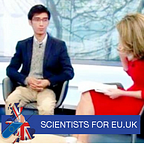The protestors who brought down Park Geun-hye are the unsung heroes of Inter-Korean peace
I can still recall the Autumn of 2016. The fragrant smell of revolt was creeping ever so gently through the streets of Seoul. South Korea soon found itself in yet another damning scandal in the aftermath of the Sewol tragedy.
Park had been facing calls to resign after she acknowledged (in a televised apology) that she provided longtime friend Choi Soon-sil drafts of her speeches for editing. Political intervention, as well as mismanagement of national information, opaqueness, and a heavy-handed leadership style proved to be the breaking point for the Korean people. Thousands took to the streets of the capital, brandishing placards and candles demanding the impeachment of the then President of the Republic of Korea.
The ‘Candlelight Struggle’ as it then became known resulted in a 6-month series of demonstrations involving hundreds of thousands of Koreans across the country. On December 9 2016, 234 members of the 300-member National Assembly voted in favor of the impeachment. In the following Spring, the court upheld the impeachment in a unanimous 8–0 decision, thus removing Park from office. And a year later, Park Geun-hye was found guilty of abuse of power and coercion, and was formally sentenced, ending the 2-year saga. An early election was called after the court’s decision, which resulted in a landslide victory for Moon Jae-in (41.08%). The rest, is history.
Now, I realise I am fast-fowarding on a lot of details. And I’m sure you will tell me this in the comments. But I must emphasise the remarkable series of events and their significance to the Inter-Korean summit cannot be understated. Allow me to further elaborate…
Let’s start by taking a look at Park Geun-hye. Born in 1952, following the advent of the Korean War, Park was surrounded by the zeitgeist of a divided nation. Her mother was murdered by a sympathyser of North Korea in a failed plot to assassinate her father, then President Park Chung-hee. In its halcyon days following the armistice agreement, South Korea was a highly authoritarian state as it struggled to maintain establishment and control of its nation against its enemies in the North. And so in an attempt to hold power, Park’s father often committed several human rights violations against his political opponents. Eventually, Park’s father was assassinated by his own intelligence chief in 1979, effectively ending Park’s long grip on power. It is no surprise that Park, being the daughter of the military strongman, eventually emerged as the highly conservative politician that we know her of today.
Park maintained a hardline approach towards North Korea, ensuring that the South will not succumb to provocations. This aligned her closely with the US, causing much anguish for Kim Jong Un’s DPRK. Although she was pro-unionist. Her ‘Vision Korea project’ mentioned ‘denuclearisation’ through an economic union, but this was more of an ambition than a manifesto. To outside observers like myself, it became more and more apparent that efforts to gain mutual trust between the Koreas was proving to be a tall order for President. To put it bluntly, the North had rejected her administration’s trust building policy initiative. Symbolically speaking, I could not envision that the North would ever agree to something as historic as this to the daughter of Park Chung-hee, the man they tried to assassinate twice. Something had to change, and that turned out to be President Moon Jae-in.
Born in the final year of the Korean War, Moon Jae-in’s parents fled North Korea towards the South in the evacuation of Hungnam. As a student, Moon Jae-in lived under Park’s father’s rule. After organising a protest against Park Chung-hee’s Yushin Constitution, the document which granted the former president immense authority, Moon was arrested, convicted, imprisoned, and expelled from the prestigious Kyunghee University where he met his wife. After serving in the military, Moon began a career in law in memory of his father. However, he was forced to become a private lawyer due to his involvement in the Yushin Constitution protest. It was not until the publication of Moon’s bestseller memoir ‘Moon Jae-in: The Destiny’, that Moon began to consider entering the political fray. Moon’s popularity began to climb steadily against Park Geun-hye, gaining parity with his opponent in 2012. Ultimately, the decline of Park Geun-hye allowed Moon to establish himself as a moderate and rational leader who had the backing of the younger generation.
After being elected, it was glaringly obvious how much Moon’s posistion on North Korea differed from Park’s. In a speech in Berlin, Moon made a signifant mention of a ‘peace treaty’ in exchange of denuclearisation. A compromise. Compared to Park’s hardline approach, akin to her father’s pro-military tendencies, Moon’s moderate policy would later sell well across the border while Park’s legacy amounted to little.
In light of the Inter-Korean summit, President Moon had made indescribable inroads into ROK-DPRK relations to the likes of which we’ve never seen before. The initial turning point to all of this?
It was the fall of Park Geun-hye, lead by the Candlelight protestors of Autumn 2016.
